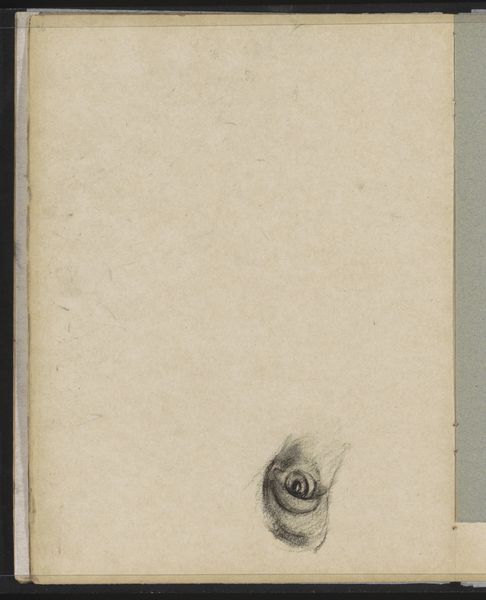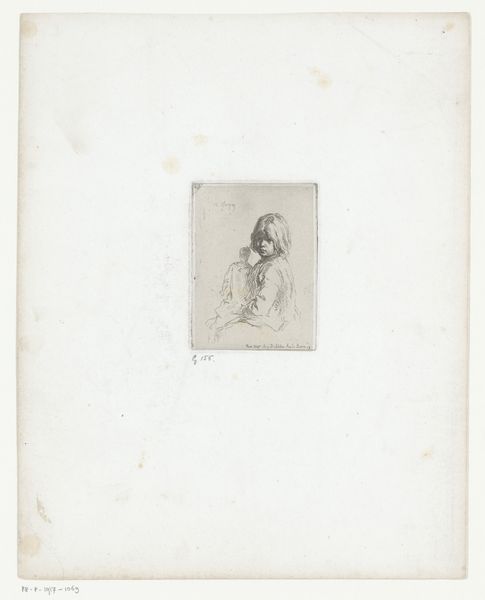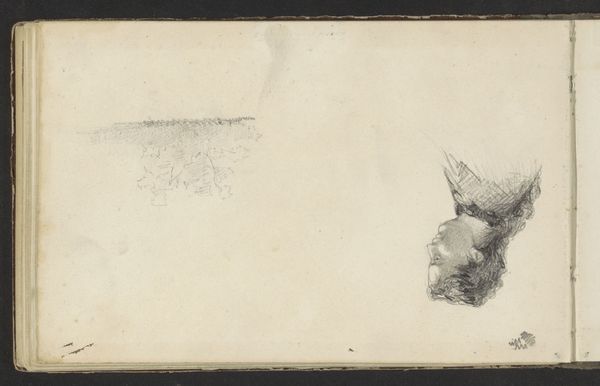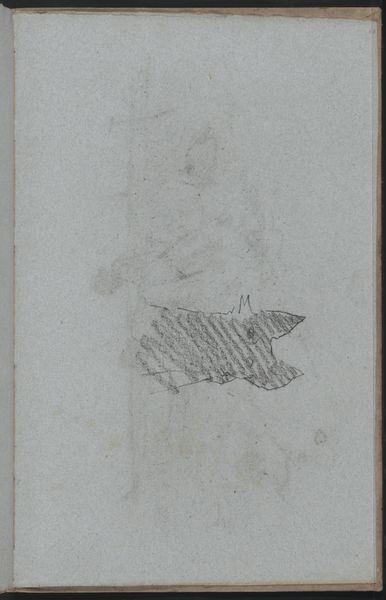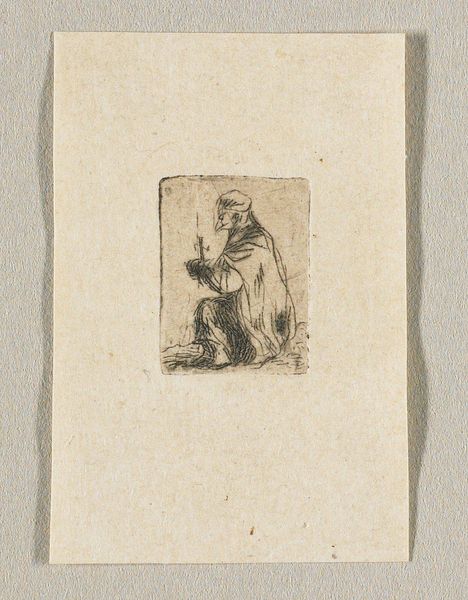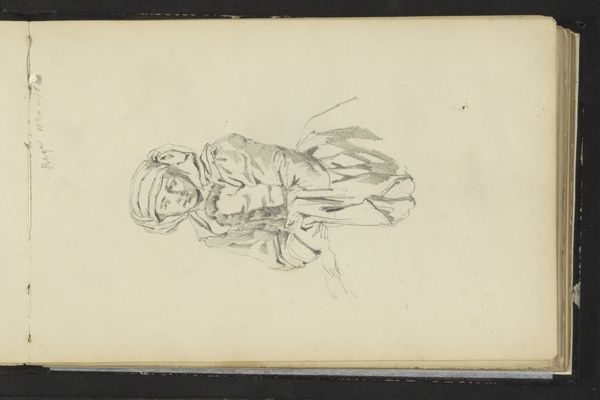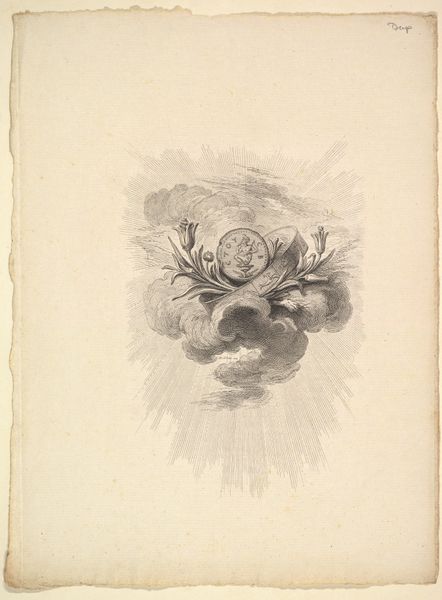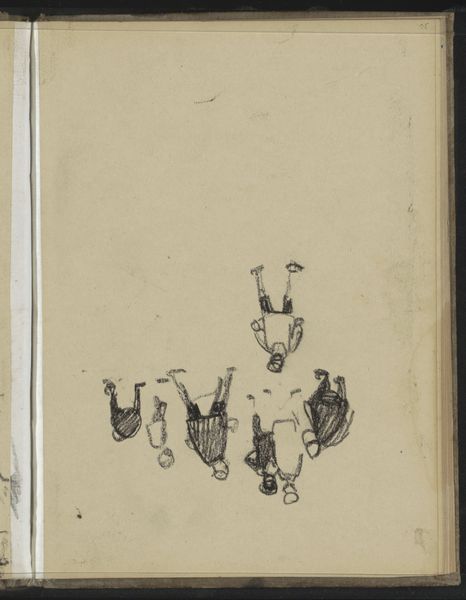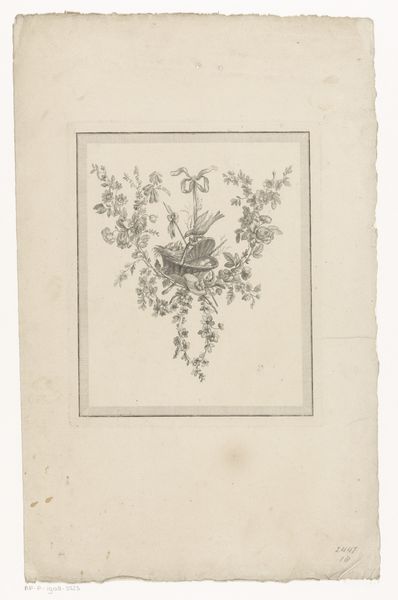
drawing, pencil
#
portrait
#
drawing
#
impressionism
#
pencil sketch
#
coloured pencil
#
pencil
Copyright: Rijks Museum: Open Domain
Editor: This is *Meisjeshoofd*, or *Head of a Girl*, a pencil drawing by Willem Witsen, dating back to about 1886. It's a small, seemingly informal sketch. There's a lot of blank space surrounding this face that has been caught mid motion. It feels very intimate, capturing a fleeting moment. How do you interpret this work, especially considering the social context of late 19th-century portraiture? Curator: It's intriguing how this seemingly simple sketch reflects the shifting social and artistic landscapes of its time. Witsen, deeply embedded in Amsterdam's art scene, pushes against formal portraiture's established traditions. This intimate portrayal aligns with the emerging Impressionist movement, focused on capturing spontaneous moments and subjective experiences, however the girl isn’t idealized like a symbol but as an individual, what was traditionally unacceptable. Consider also how this informality democratized the subject, presenting an "ordinary" person rather than a member of the elite, and questioning established societal hierarchies of who deserved artistic representation. Does the lack of setting contribute to that? Editor: That's a great point! I hadn’t really considered the social implications of depicting an “ordinary” person and removing those markers of status. How does its display in the Rijksmuseum change the reading of the artwork? Curator: Placing it in a museum like the Rijksmuseum, an institution dedicated to preserving national heritage, immediately elevates its status. It invites viewers to consider the historical value of this fleeting moment and how this intimate glimpse contributes to a broader understanding of Dutch society at the time, and how the act of exhibiting such an image helps define societal values. By showing it, the museum endorses the value of artistic exploration and the depiction of everyday life and invites public conversations about its interpretation. It solidifies a definition for "Dutchness." Editor: That's fascinating! I guess the sketch tells us about the artist’s perspective, the sitter, and then about what we, as a society, choose to value through exhibiting it. Thanks for broadening my understanding of this small drawing. Curator: Absolutely! Art, like history, is a continual negotiation of meaning, power, and perspective.
Comments
No comments
Be the first to comment and join the conversation on the ultimate creative platform.
